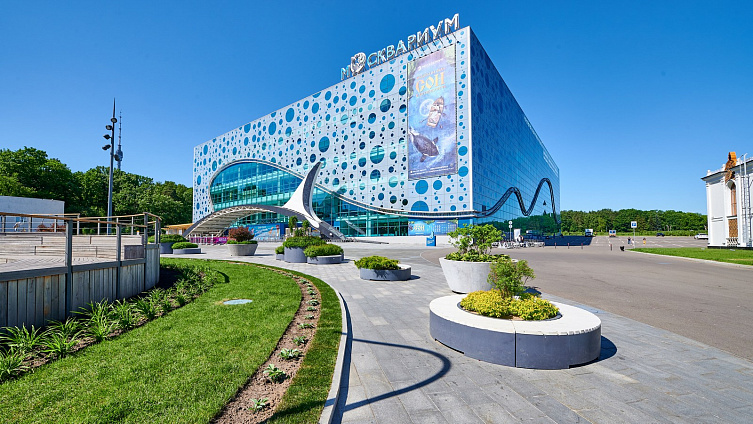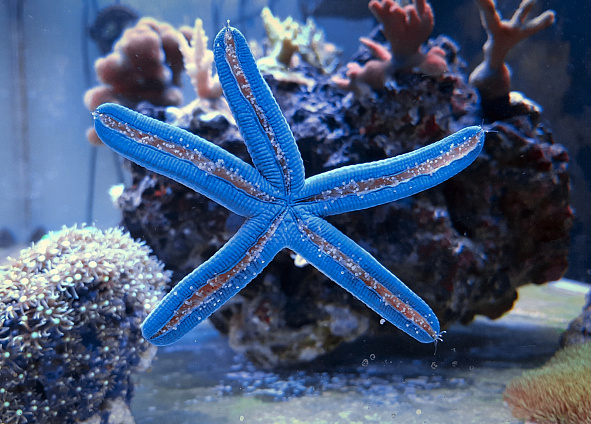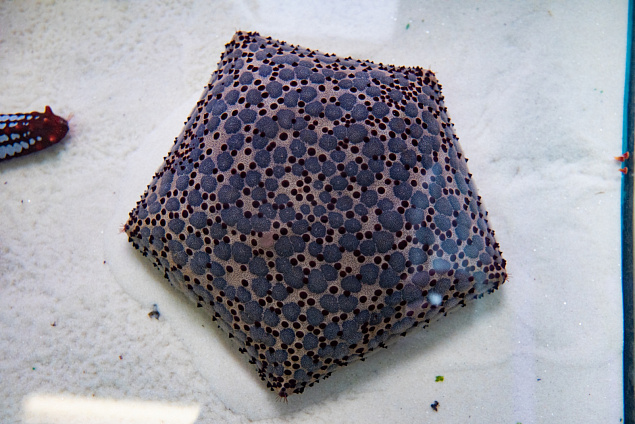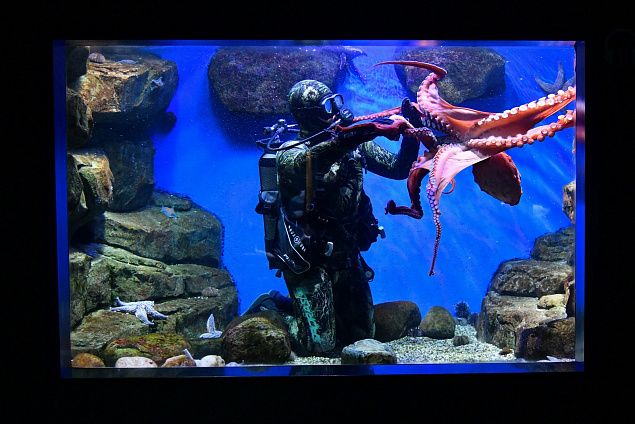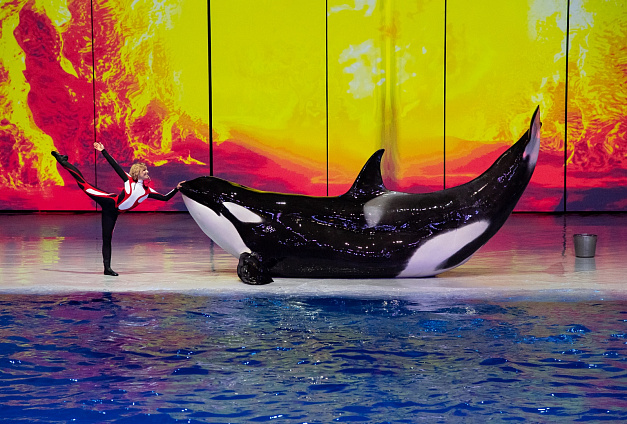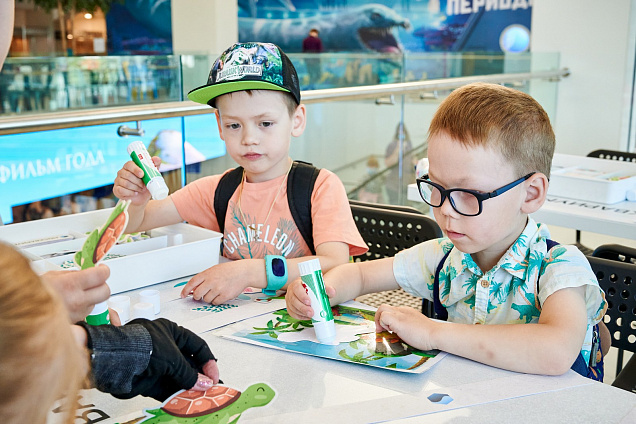The Moskvarium Centre of Oceanography and Marine Biology at VDNH turned six on 5 August 2021. Between 5 and 8 August, its guests will be able to attend free workshops, take part in an exciting quest and sightseeing tours, enter a prize giveaway and meet Moskvarium's brand-new residents: starfish.
On its 6th birthday, VDNH's Moskvarium has festive events in store for children and adults alike. The celebrations honour starfish in particular, hence the programme's name: A Very Starry Birthday. Between 5 and 8 August, the guests will be able to attend free workshops, take a sightseeing tour, go on a quest and enter a prize giveaway. The celebration's main venue is the Moskvarium exposition, home to 12,000 marine animals. Participation in the celebrations is free. Tickets are required to access the exposition.
New residents
Aside from getting acquainted with the many thousands of underwater creatures living in Moskvarium, the visitors will also greet its new residents: starfish. The exposition has been joined by two new species: the cushion star (Culcita novaeguineae) and the blue star (Linckia laevigata).
The main distinguishing trait of the starfish is the shape of their body, consisting of a central part (disk) and lateral outgrowths, which are usually referred to as rays or arms.
The new starfish have been sent to Moskvarium by scientists from Indonesia for further study. The cushion star and the blue star have a beautiful five-armed silhouette. Both species favour warm water. They are commonly found in the Pacific and Indian Ocean.
The cushion star, aside from having a rather unusual name, is also known as one of the largest starfish species in the World Ocean. It reaches 40 cm in diameter. It mainly subsists on a diet of invertebrates but can also damage reefs by eating coral polyps. Its five arms are barely visible, if compared to its massive body, making it look more like a bloated ball.
The blue star, on the contrary, has thin elongated arms. It is very widespread in the tropics. This underwater beauty is impossible to miss. It is set apart by its bright blue colouration, which is not found in practically any other starfish. The blue star does not harm corals; its diet includes algae and small invertebrates.
Specially for Moskvarium's new arrivals, ichthyologists have recreated the tropical sea ecosystem in a special open tank, also home to horseshoe crabs (Tank 54). It's perfect for seeing the cushion star and the blue star up close. You can even learn some interesting facts about these creatures from the ichthyologist on duty, who will be monitoring the tank.
Starfish spent most of their day crawling along the ocean floor. They do this very slowly; the usual speed of a medium-sized specimen is 10 cm per minute, but sometimes the starfish can 'accelerate' to a speed of 25–30 cm per minute. If required, they can also climb on top of rocks, corals and algae. The starfish living in Moskvarium often attach themselves to the outer walls of their tanks, giving the guests a unique opportunity to inspect their anatomy.
The Moskvarium specialists have extensive experience in caring for the starfish, which have lived at the centre since its opening in 2015. Now, counting the new inhabitants, Moskvarium houses ten starfish species: the common, or sugar, starfish (Asterias rubens), the Japanese common starfish (Asterias amurensis), the blue bat star (Patiria pectinifera), the red knob star (Protoreaster linckii), the sand star (Archaster typicus), asterina (Asterina sp), the northern sunstar (Solaster endeca), the common sunstar (Crossaster papposus), the blue star (Linckia laevigata) and the cushion star (Culcita novaeguineae). In total, more than a hundred individual starfish specimens live at the exposition, from the tiny asterinae, which reach 2 cm in diameter, to the giant 40-cm cushion stars.
Each species enjoys an ichthyologist-designed individual diet that includes powdered seafood like mussels, langoustines or shrimps. Moskvarium's experts and other researchers have plans to study different types of starfish, their dietary habits and way of life, as well as their impact on coral reefs and the World Ocean's ecosystem.
Star-themed quest and giveaway
To give Moskvarium's new residents a proper welcome and celebrate the centre's birthday, its experts have designed a new educational quest, aimed at exploring the aquarium's exposition. From 5 to 8 August, the questers will need to find six tanks with different starfish species. Each tank will hide a letter, and the letters will form a code word for entering Moskvarium's grand giveaway. The prizes will include: certificates for swimming with dolphins, invitations to a water show with sea animals, tickets to the Aquarium and the Jurassic Ocean multimedia exhibition and marine animal plushies. The live prize draw will start at 3:00 p.m. on 10 August on Moskvarium's Instagram page: href="https://www.instagram.com/moskvarium_official/" target="_blank">.
Participation in the quest is free. Quests are organised between 5 and 8 August. The quest maps will be available at the information desk on the ground floor in front of the exposition entrance. To receive a map, you will have to show your ticket.
On Moskvarium's birthday on 5 August, all of the exposition's visitors will receive commemorative souvenirs: magnets, puzzles, books, board games, mugs and more. Souvenirs will be handed out at the Aquarium exit.
Creative workshops
Moskvarium's youngest guests are invited to free workshops, where they will learn to make cardboard sea crowns, candles and scented sachets. The workshops will run between 10:00 a.m. and 7:00 p.m. from 5 to 8 August at the Aquarium exhibit. To enter the Moskvarium exposition, you will have to purchase a ticket to the Aquarium.
Sightseeing tours
The Moskvarium staff will take their guests on free sightseeing tours of the Aquarium exposition. The tour will introduce visitors not just to starfish but also to sharks, rays, piranhas, arapaimas and other aquatic animals, including the baby whitetip shark recently born at the Aquarium. The guided tours are scheduled for 5, 6, 7 and 8 August, and will be taking place three times a day: at 11:00 a.m., 2:00 p.m. and 5:00 p.m. Each tour is 50 minutes long. Please note that participation in the tours is limited. You need to sign up by dialling Moskvarium's call centre at +7(499)677-77-77. Participation in the guided tours is free. To enter the Moskvarium exposition, you will have to purchase a ticket to the Aquarium.
Public feedings and training sessions
During these special days, the exposition will hold public feedings of its various inhabitants: sharks, rays, piranhas, arapaimas and an octopus. The Baikal seals, especially beloved by the public, will also put on a special performance. The guests will watch them kiss and dance. The schedule is available on Moskvarium's website. There will also be an underwater show inside the main freshwater tank. The performer will be dressed as a mermaid. Participation in the programme is free. To enter the Moskvarium exposition, you will have to purchase a ticket to the Aquarium.
Online programme
At 12:00 p.m. on 5 August, Moskvarium will share an educational video for kids on its official social media pages. The video will talk about sharks and their babies that were recently born at Moskvarium. At 5:00 p.m. on the same day, children over 3 and adults will enjoy a video tour, where ichthyologists will introduce the new starfish and other representatives of the Echinodermata phylum.
Full programme
The celebration's full programme is available on Moskvarium's website.
All of the centre's guests must wear masks and follow social distancing requirements.
Please note that participation in the tours is limited. You need to sign up by dialling Moskvarium's call centre at +7(499)677-77-77. No registration in advance is required for other activities. Participation in the celebrations is free. Aquarium tickets are required to access the exposition.
